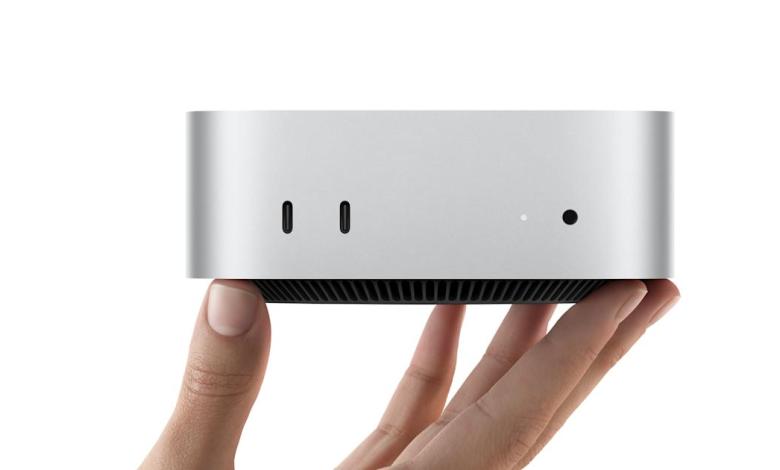Apple’s redesigned Mac mini is a little beast with M4 and M4 Pro chips

You can trace the beginning of the mini computer trend back to the original Mac mini, which started in 2005 with a simple pitch: What if it was a desktop, but smaller? Now Apple aims to take that concept one step further with its latest Mac mini, a five-by-five-inch box that’s just two inches tall, and can handle serious workloads. And while we expected it to feature Apple’s M4 chip, it could also be configured with a more powerful M4 Pro model, which was also announced today. Combine that hardware with the standard 16GB of RAM (like the new M4 iMac), and you have a compelling Mac mini that starts at $599 ($499 for education customers).
Why, exactly, did Apple drop the Mac mini? It’s not like the previous case, which has been around for years, was too big (it measures 7.75-inches by 7.75-inches, and is 1.41-inches thick). When I reviewed the M2 Mac mini early last year, I was still impressed by how thin and sleek it looked, especially compared to smaller Windows systems. But by shortening its footprint (at the cost of making it a little taller), Apple can once again present the Mac mini as something to be desired.
You may not need it, but take a look at its diminutive frame, and you may begin to find reasons to give it a loving home.
Apple says the M4 chip makes the new Mac mini 1.8 times faster than the M1 version, and 2.2 times faster when it comes to graphics. (The fact that Apple isn’t directly comparing the M2 model makes it clear that this isn’t a huge year-over-year improvement.) While the M4 chip tops out at 10 cores, the M4 Pro tops out at 14 cores. . (10 performance and 2 cores are efficient). It also has a 20 core GPU, double the amount on the base M4 chip. The M4 Pro brings Thunderbolt 5 connectivity for the first time to a Mac, offering three times the bandwidth of Thunderbolt 3, and up to 64GB of RAM. There’s also 273 GBps of memory bandwidth, which should be a big help for AI processing.
Given that Apple Intelligence was officially launched this week with the release of iOS 18.1, it’s also a big selling point for the new Mac mini. The M4 chip sports 38 TOPS (tera operations per second) of AI processing power, while the M3 tops out at 18 TOPS. Although Apple hasn’t said this outright, I’d bet AI is also a big reason why the Mac Mini now starts with 16GB of RAM. Apple Intelligence requires at least 8GB of RAM to run, but the company has admitted that it may not be enough to use the AI features of Xcode 16. As always, having more RAM is better for future proofing, especially if you can add more memory down the line .
Apple has finally given us a few front ports on the Mac mini, instead of the clean facade of the last few models. There are two USB-C ports and a 3.5mm jack on the front, which will make it very easy to connect jump drives and headphones. On the back, you’ll find three more USB-C ports (one of which supports Thunderbolt), HDMI, and Ethernet. While it would be nice to see an integrated SD card reader, Apple currently withholds that from the more expensive Mac Studio.
You can pre-order the new M4 Mac mini today starting at $599 ($499 for education customers), and it will be available in stores on November 9th. The M4 Pro model, meanwhile, starts at $1,399 ($1,299 for schools). That price difference may seem steep, but it’s the same as it was for the M2 models. And as we saw in our little review of the M2 Mac, it holds its own against other expensive desktops.
Source link




/cdn.vox-cdn.com/uploads/chorus_asset/file/25728924/STK133_BLUESKY__B.jpg?w=390&resize=390,220&ssl=1)